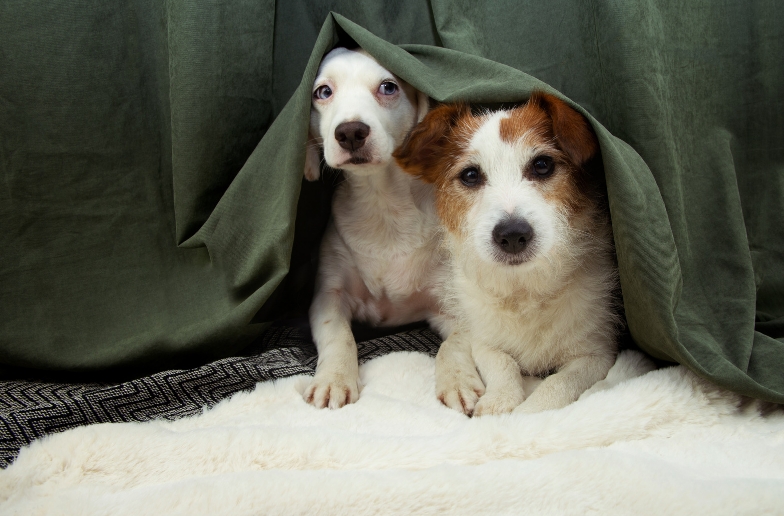
A phobia is characterised as an intense fear or aversion to specific triggers. In pets, the most likely phobias are linked to loud or sudden noises, such as thunder, fireworks, and gunshots.
No matter if your pet lives in the busy town or the countryside, they’ll likely have a run-in with these ear-splitting sounds sooner or later. For some pets, it’s like a horror movie—utterly terrifying! Their reactions can be so dramatic that they might need a little help to chill out and learn to handle the noise.
Wondering if your pet has a noise phobia? Look for signs like cowering, shivering, shaking, hiding, restlessness, hyperactivity, whining or barking, indoor toileting mishaps, drooling, panting, digging, chasing their own tail, jumping, or excessive grooming—basically, a furry mess of anxiety!
How to Help Your Furry Friends During Noisy Events:
For both cats and dogs:
- Keep them indoors and make sure the cat flap is locked!
- Turn up the volume on the TV or radio to drown out the booms.
- Avoid lavishing attention on your scaredy-pet; that just reinforces their fears!
- Stay cool as a cucumber; praise their calm moments and ignore the noise.
- If they’re game, get the toys out for a distraction!
- Skip the walk during noisy times; save those for when it’s quieter.
- Set up a cosy hideout with an old box or crate stuffed with blankets.
- Don’t leave them alone during loud chaos! If you must, don’t get angry for any little messes they make in your absence.
For small pets:
- Provide extra bedding for burrowing—think of it as their security blanket!
- Move their hutches or cages to a quieter area, or at least drape a thick blanket over them to muffle out the noise.
Behaviour Modification:
- Prevention is key! Help your pet link loud noises with fun times—like their favourite toys or games—right from day one.
- Introduce these fun distractions even when the noise isn’t blasting; it’s all about positive vibes!
- Sound desensitisation is key for training your dog to accept scary sounds. Try some pre-recorded CDs or YouTube videos full of loud noises to help them acclimate.
- Got questions? Don’t hesitate to consult our Kibbles team for training tips!
Medical Management:
- Some of our pets might need a little extra help from the pharmacy to tackle their noise phobias—think diffusers, sprays, collars, and calming tablets with synthetic pheromones.
- Prescription meds, like mild sedatives, could also be an option.
- Remember, these should go hand-in-paw with behavioural therapy, so give our Kibbles team a shout for advice!
